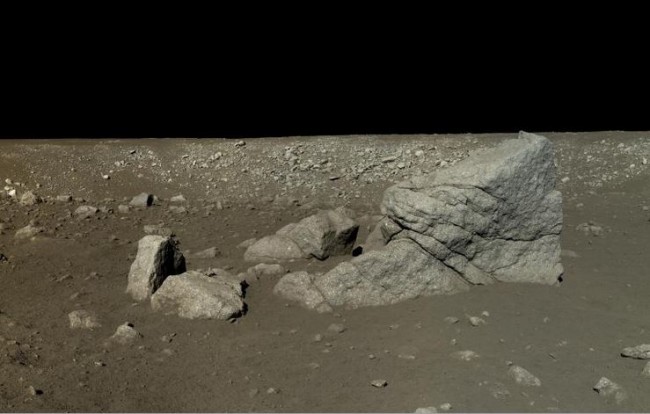






Now you can see the moon's surface through the keen eyes of Chang'e-3, China's lunar lander.
On December 14, 2013, the lander and Yutu, its piggybacking rover, touched down on the moon's northern Mare Imbrium—making China just the third country ever to perform a soft landing on the lunar surface, after the Soviet Union and the United States.
The China National Space Administration publicly released thousands of the mission's stunning color photos sometime in 2015. But the shots haven't enjoyed much publicity in Western media until now, in part because China typically releases images by 12 to 18 months after receiving them, and uses an unwieldy website written only in Chinese to showcase them.
But the Planetary Society's Emily Lakdawalla recently spent more than a week amassing the photo trove—which amounts to 35 gigabytes of data—and presenting it in an easily downloadable, navigable manner.
"When it comes to data sharing from China, the situation is pretty good," says Lakdawalla, who notes that the images' formats mirror those used by NASA and the European Space Agency. "It would probably be much easier if I could read the language."
The photos are more than pretty: Even though Yutu stopped rolling in January 2014, the data it beamed back already has deepened scientists' understanding of lunar geology, even revealing a type of moon rock undiscovered by the U.S. and U.S.S.R.'s moon missions. And the lander's instruments—including the only moon-based telescope—are still working, more than two years after touchdown.
"China is trying to reach the top tier and show that they're a major space power," says Kevin Pollpeter, a Defense Group, Inc. analyst affiliated with the University of California San Diego. "They're also contributing real knowledge about the moon that we haven't been able to get before."
Despite the photo cache's size, however, it doesn't contain every Chang'e-3 snapshot. Lakdawalla is still working to acquire additional photos from cameras used for engineering purposes, such as identifying hazards during descent.
And just in case you think Chang'e-3 might get lonely up there: In 2017, China plans to send another lander to the moon that will return samples to Earth, if all goes well.
Credit: National Geographic


























